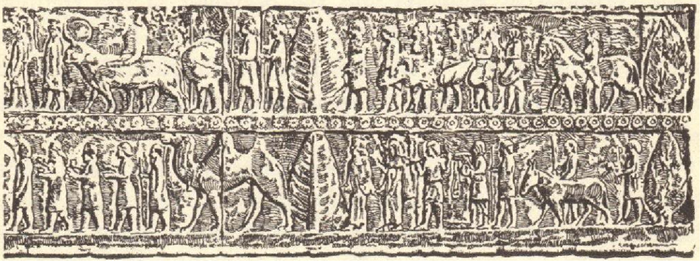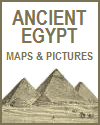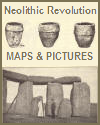| Bringing Tribute to the Persian King |
| www.studenthandouts.com > World History > Ancient Near East > Ancient Near East Images |
 |
|
Bringing tribute to the Persian king. Bas-relief from a palace at Persepolis. Click here to enlarge.
Ancient Persia, located in what is now Iran, was home to one of the most influential civilizations in history, known for its rich cultural heritage, impressive architectural achievements, and significant contributions to art, science, and governance. The Persian Empire, also known as the Achaemenid Empire, was founded by Cyrus the Great in the 6th century BCE and expanded to become the largest empire the world had seen, stretching from the Indus Valley in the east to the Aegean Sea in the west. Cyrus the Great is renowned for his progressive approach to governance, particularly his respect for the customs and religions of the lands he conquered. His policies of tolerance and cultural integration set a standard for subsequent Persian rulers. The Cyrus Cylinder, often regarded as the first charter of human rights, exemplifies his commitment to these principles. Darius I, another prominent ruler, further expanded the empire and established an efficient administrative system. He divided the empire into provinces called satrapies, each governed by a satrap. This system allowed for efficient tax collection, local autonomy, and effective control over the vast territories. Darius also initiated major construction projects, including the Royal Road, which facilitated communication and trade across the empire. The Persian Empire is noted for its architectural and artistic achievements. The capital city of Persepolis, with its grand palaces, intricate reliefs, and monumental staircases, showcases the sophistication and grandeur of Persian art and architecture. The use of columned halls, expansive terraces, and detailed carvings became hallmarks of Persian design. Religion played a central role in Persian culture, with Zoroastrianism being the dominant faith. Founded by the prophet Zoroaster, this monotheistic religion emphasized the duality of good and evil, the importance of individual choice, and the eventual triumph of good. Ancient Persia's influence extended beyond its borders, impacting Greek, Roman, and subsequent Islamic civilizations. Its legacy is evident in various fields, including politics, architecture, and religious thought, underscoring its enduring impact on world history. |
 |
 |
 |
 |
 |
|---|
| www.studenthandouts.com > World History > Ancient Near East > Ancient Near East Images |






